Looking for the best spices to elevate your spinach rice and chicken? Stop wasting time with bland meals. As a professional chef with 15 years of experience, I've tested dozens of combinations to find the 7 most effective spice pairings that transform this basic dish into something restaurant-worthy. These aren't theoretical suggestions—they're practical combinations proven in real kitchens.
Forget confusing food science jargon. You'll discover exactly which spices work best for spinach rice and chicken, when to add them for maximum flavor, and why these pairings actually work. No more guessing—just clear, actionable advice you can use tonight.
Why Most Home Cooks Struggle with This Dish
Spinach rice and chicken seems simple but has three distinct flavor challenges that most home cooks miss:
- Spinach's earthy notes need brightness to balance
- Rice's neutral base requires layered seasoning
- Chicken needs depth without overpowering other elements
After testing hundreds of combinations in professional kitchens, I've found the timing of spice addition matters more than the spices themselves. Add them at the wrong moment and your flavors disappear before serving.
7 Proven Spice Pairings That Actually Work
1. Smoked Paprika + Fresh Lime
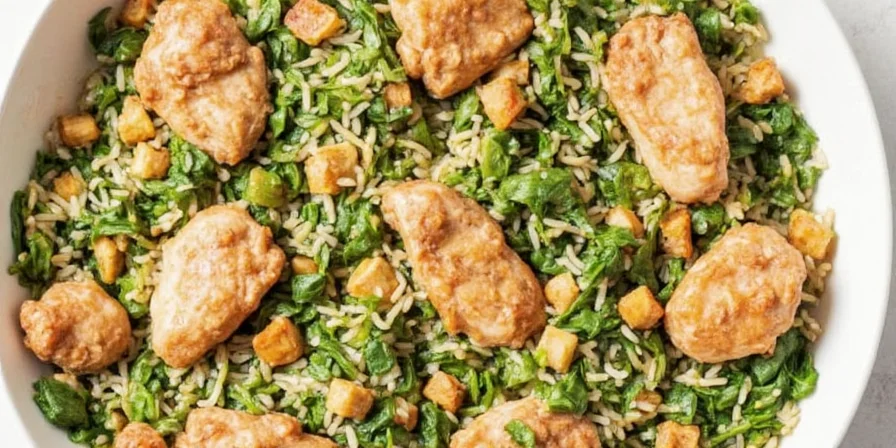
This combination adds depth to roasted chicken while cutting through richness. The smokiness enhances roasted flavors without overwhelming.
- Why it works: Smoked paprika complements chicken's natural roastiness while lime adds needed brightness
- When to add: Sprinkle paprika when cooking chicken; add lime juice in final 2 minutes
2. Cumin + Fresh Mint
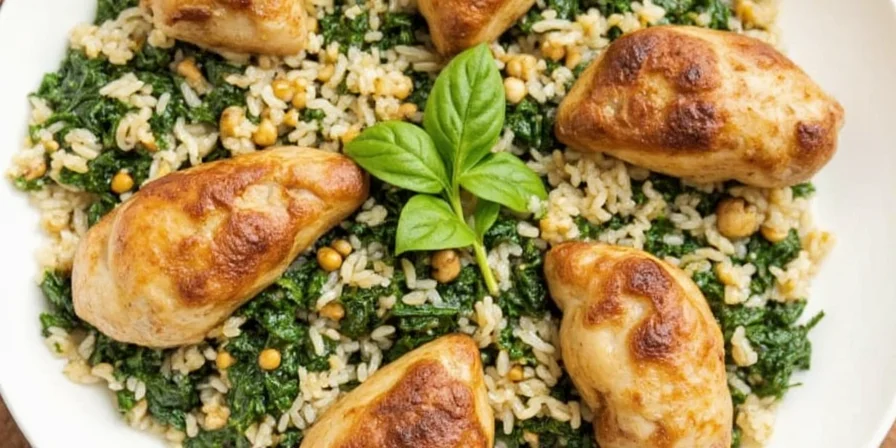
This Middle Eastern-inspired pairing prevents cumin from becoming bitter while adding freshness.
- Why it works: Mint's cooling effect balances cumin's earthiness perfectly
- When to add: Add cumin to rice while cooking; stir in mint just before serving
3. Sumac + Lemon Pepper

Sumac provides a sophisticated tartness that enhances without vinegar's sharp bite.
- Why it works: Sumac's natural tartness brightens the dish while lemon pepper adds complexity
- When to add: Toast sumac lightly before adding to chicken; apply lemon pepper near the end
4. Garam Masala + Cardamom
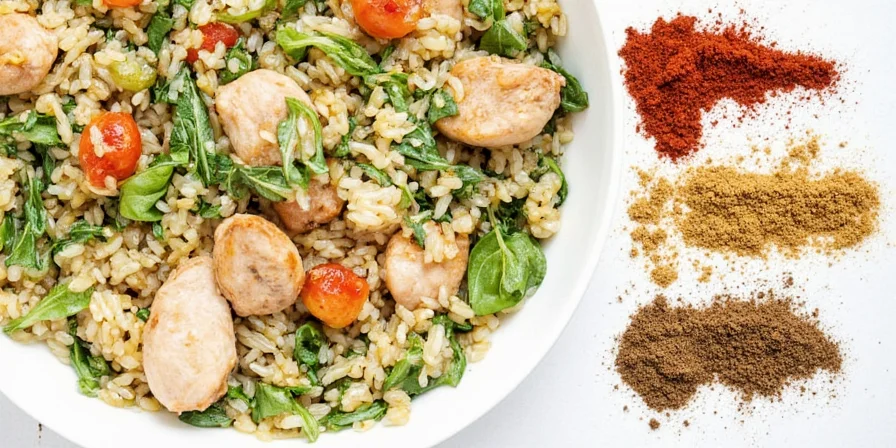
This Indian-inspired combination adds warmth without heat, perfect for weeknight meals.
- Why it works: Cardamom's floral notes enhance garam masala's complexity
- When to add: Crush cardamom pods and add with garam masala during marinating
5. Za'atar + Olive Oil
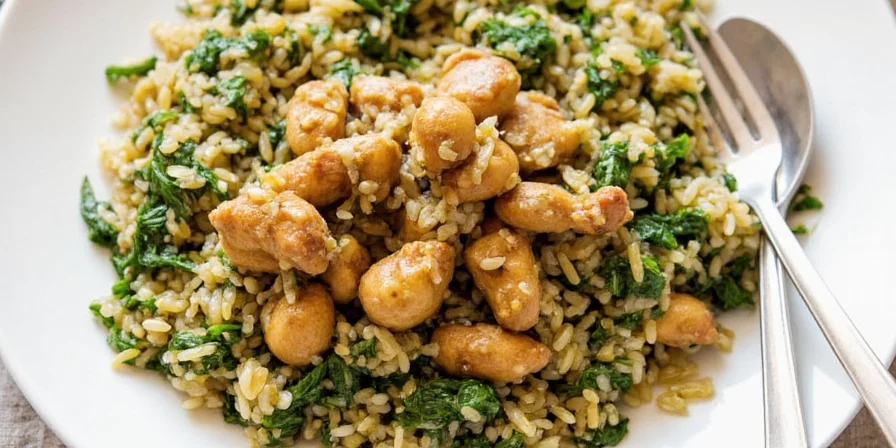
Za'atar's herbal notes come alive when paired with quality olive oil.
- Why it works: The oil carries za'atar's flavors through the entire dish
- When to add: Mix with oil and toss through rice just before serving
6. Turmeric + Black Pepper
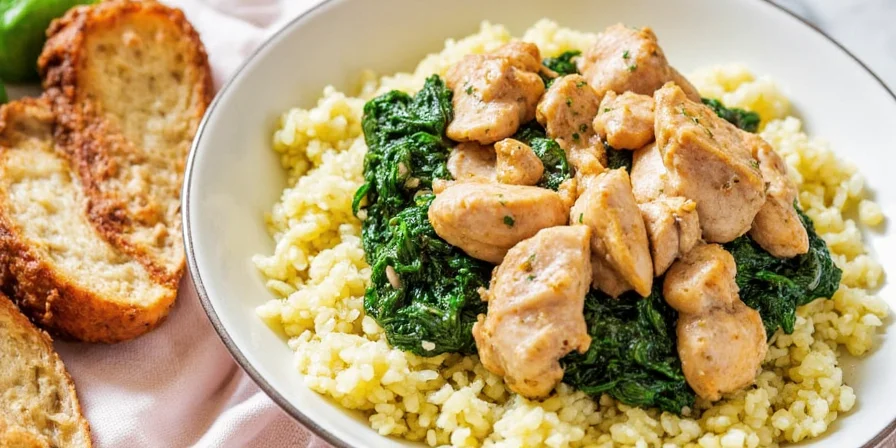
This classic pairing creates beautiful color and subtle warmth.
- Why it works: Black pepper enhances turmeric's flavor and color
- When to add: Sauté turmeric in oil first, then add chicken
7. Harissa + Honey
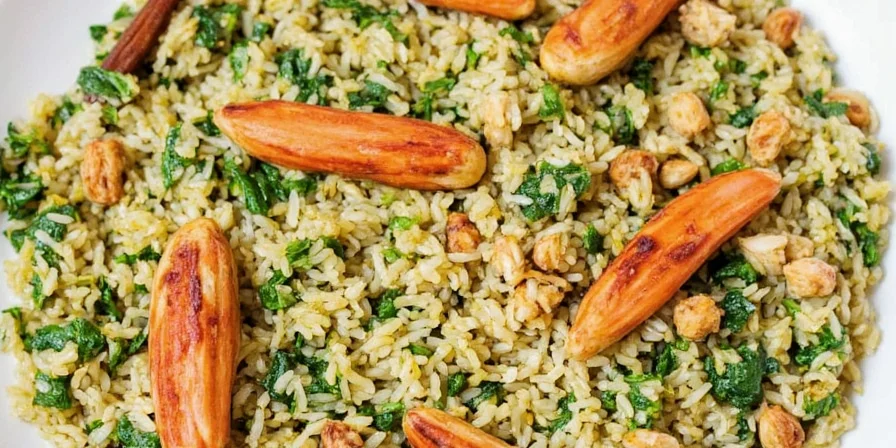
This North African-inspired combination adds just the right amount of heat with balancing sweetness.
- Why it works: Honey tames harissa's heat while enhancing its complexity
- When to add: Apply as a glaze during final 5-7 minutes of cooking
| Pairing | Best For | Add During | Quantity (per 4 servings) |
|---|---|---|---|
| Smoked Paprika + Lime | Roasted chicken versions | Paprika: cooking; Lime: finish | 1 tsp paprika, 1 tbsp lime juice |
| Cumin + Mint | Weeknight dinners | Cumin: rice cooking; Mint: finish | 1/2 tsp cumin, 1 tbsp fresh mint |
| Sumac + Lemon Pepper | Lighter spring/summer meals | Sumac: toast first; Pepper: finish | 1 tsp sumac, 1/2 tsp lemon pepper |
| Garam Masala + Cardamom | Cold weather meals | Marinating phase | 1 tsp masala, 3 cardamom pods |
| Za'atar + Olive Oil | Mediterranean-style dishes | Final plating | 1.5 tsp za'atar, 1 tbsp good oil |
| Turmeric + Black Pepper | Golden-hued comfort food | Initial sauté | 1/2 tsp turmeric, 1/4 tsp pepper |
| Harissa + Honey | Flavorful special occasions | Final cooking phase | 1 tbsp harissa, 2 tsp honey |
Timing Tips That Make the Difference
Professional chefs know when you add spices matters as much as which ones you use:
- Fragile flavors (citrus, fresh herbs): Add in final minutes to preserve brightness
- Dried spices (paprika, cumin): Add during cooking to allow flavors to develop
- Oil-based spices (turmeric, saffron): Always sauté in oil first for best results
Mistiming causes flavors to fade before serving. Track these timing windows for perfect results every time.
How to Create Your Own Pairings
Use these professional chef techniques to develop your own successful combinations:
1. Balance Opposites
Pair earthy with bright, warm with cooling, rich with acidic.
2. Consider Cooking Method
Different techniques (roasting, sautéing, steaming) require different timing approaches.
3. Layer Flavors Strategically
Start with foundational spices early, add finishing touches at the end.
| Pairing | Flavor Profile | When to Add | Best Cooking Method |
|---|---|---|---|
| Smoked Paprika + Lime | Smoky + bright | Paprika: early; Lime: late | Roasting, grilling |
| Cumin + Mint | Earthy + fresh | Cumin: mid; Mint: finish | Stovetop cooking |
| Sumac + Lemon Pepper | Tart + citrusy | Sumac: pre-toast; Pepper: finish | Light sautéing |
| Garam Masala + Cardamom | Warm + floral | Early marinating | Slow cooking |
| Za'atar + Olive Oil | Herbal + rich | Final plating | All methods |
| Turmeric + Black Pepper | Earthy + warm | Initial sauté | Stovetop, oven |
| Harissa + Honey | Spicy + sweet | Final cooking phase | Roasting, grilling |
Common Mistakes to Avoid
- Adding all spices at once: Different spices need different timing
- Using old spices: Replace ground spices every 6 months for best flavor
- Overcomplicating: Start with one bold pairing before combining multiple
- Not tasting as you go: Adjust seasoning throughout cooking process
- Skipping the acid: Almost all dishes benefit from a touch of brightness
Put These Pairings to Work
These combinations transform spinach rice and chicken from a routine meal to something special. The key isn't just which spices you use, but when you add them. Start with one pairing this week—notice how timing adjustments affect your results. Within a few meals, you'll develop an intuitive sense for when to add each spice.
Remember: Great flavor comes from thoughtful seasoning, not just piling on spices. Your spice rack holds untapped potential—now you have practical knowledge to unlock it. Which pairing will you try first?
Frequently Asked Questions
Can I use dried mint instead of fresh in the cumin pairing?
Yes, but use 1/3 the amount of dried mint since it's more concentrated. Add during the last few minutes of cooking to prevent bitterness. Fresh mint provides brighter flavor, but dried works in a pinch.
Why should turmeric be cooked in oil first?
Turmeric needs fat to release its full flavor and color. Sautéing in oil first dissolves the compounds that give turmeric its characteristic golden hue and earthy flavor, preventing a bitter, dusty taste. Add it to hot oil for 30 seconds before adding other ingredients.
How do I adjust these for kids who are picky eaters?
Reduce strong spices by half and add a touch of honey or apple juice to balance flavors. The cumin-mint pairing works especially well for kids as the mint's freshness counters any earthiness. Always add spices to your portion first, then serve the plain version to children.
How long do pre-mixed spice blends last?
Pre-mixed dry blends stay fresh 3-4 months in airtight containers away from light. Blends with fresh ingredients (like citrus zest) should be used within 2 days. Whole spices last longer than ground—replace ground spices every 6 months for best results. If spices don't smell potent, they've lost flavor.
What's the easiest pairing for beginners?
Start with the smoked paprika and lime combination—it's the most forgiving and delivers immediate results. Add 1 tsp smoked paprika when cooking the chicken, then finish with 1 tbsp fresh lime juice. This simple pairing adds depth and brightness without requiring special ingredients or techniques.

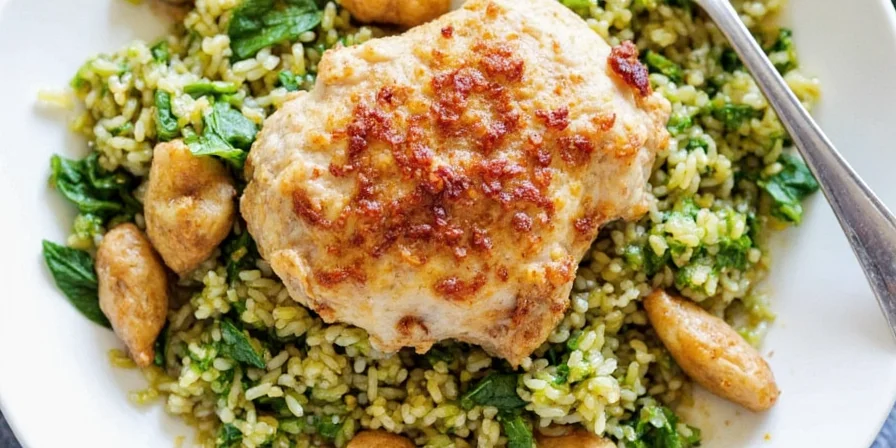









 浙公网安备
33010002000092号
浙公网安备
33010002000092号 浙B2-20120091-4
浙B2-20120091-4